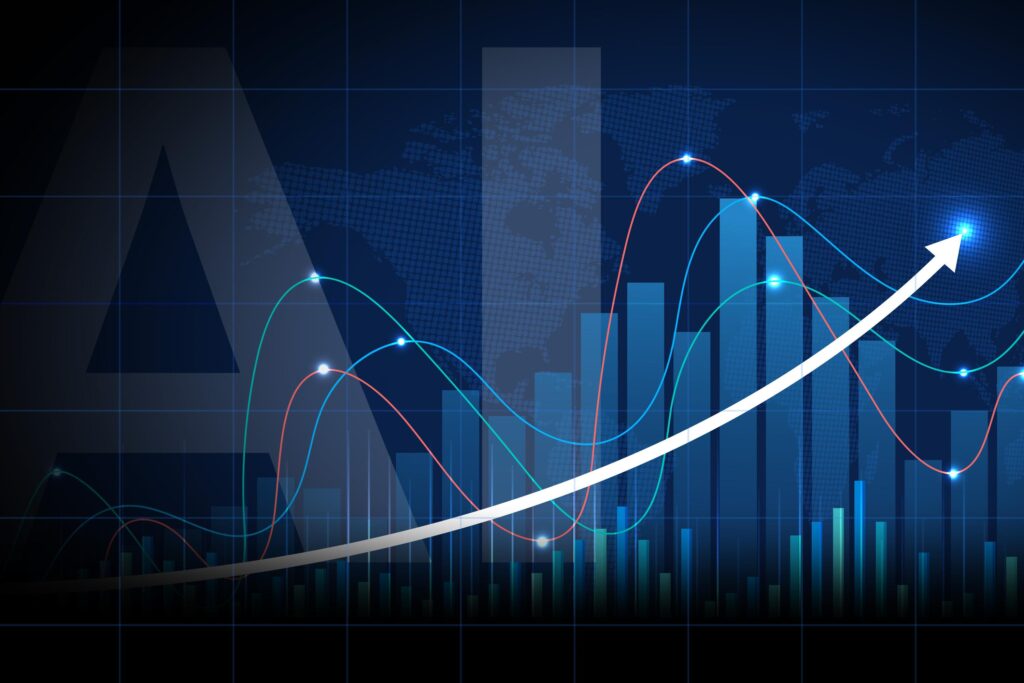ECONOMICS WATCH – AI and the Economy: The Tail Wagging the Dog – The Cannata Report
As artificial intelligence continues its rapid advancement, its influence on the global economy has become impossible to ignore. From reshaping labor markets to redefining productivity, AI technologies are not just supporting economic growth-they are increasingly steering its direction. In this edition of The Cannata Report, we explore the profound ways in which AI is transforming economic dynamics, raising critical questions about who really holds the reins in this evolving relationship: is technology driving economic outcomes, or is the economy shaping the development of AI? Join us as we unpack the implications of this shifting balance in a world where the tail may just be wagging the dog.
The Growing Influence of Artificial Intelligence on Global Market Dynamics
As artificial intelligence continues to embed itself deeper within economic frameworks, its role in reshaping market behaviors becomes impossible to ignore. From algorithmic trading to predictive analytics, AI-driven technologies are altering how decisions are made and resources allocated. This seismic shift is not just influencing traditional sectors but also spawning new avenues for growth and disruption. Key market players now rely heavily on AI to gauge consumer sentiment, optimize supply chains, and even forecast geopolitical events that impact global trade. The pace at which AI integrates into economic models challenges regulators and investors alike to keep pace with an environment where data and machine learning algorithms often dictate market rhythms.
Several transformative effects are already reshaping global markets:
- Enhanced real-time data processing enabling more agile investment strategies.
- The emergence of AI-driven financial products tailored to individual risk profiles.
- Increased automation in manufacturing leading to cost efficiencies and shifts in labor dynamics.
- Heightened importance of cybersecurity as AI systems become pivotal in protecting sensitive economic infrastructure.
| Sector | AI Adoption Rate | Market Impact |
|---|---|---|
| Finance | 85% | Increased algorithmic trading volume |
| Manufacturing | 75% | Reduced production costs by 20% |
| Retail | 65% | Personalized marketing and inventory management |
| Healthcare | 55% | Improved diagnostics and operational efficiency |
Navigating the Risks and Opportunities of AI-Driven Economic Transformation
Artificial Intelligence is reshaping markets at an unprecedented pace, forcing policymakers and business leaders alike to rethink economic strategies. While AI promises increased productivity and innovation, it also introduces significant uncertainties such as job displacement, data monopolies, and ethical quandaries. The interplay between human labor and automated processes is creating a landscape where traditional economic models struggle to keep up with rapid technological shifts. Key challenges include:
- Emerging digital divides affecting workforce readiness
- The concentration of capital within AI-centric industries
- Shifts in consumer behavior driven by AI personalization
On the flip side, opportunities abound for those who can harness AI tools effectively. Small and medium enterprises are gaining access to insights and automation that were once exclusive to large corporations, leveling the economic playing field in unexpected ways. Governments that implement adaptive regulatory frameworks could stimulate innovation while safeguarding public interests. Below is a simplified overview illustrating potential impacts on various economic sectors:
| Sector | Risk | Opportunity |
|---|---|---|
| Manufacturing | Job automation leading to layoffs | Enhanced efficiency and reduced costs |
| Finance | Algorithmic biases affecting lending | Improved fraud detection and customer service |
| Healthcare | Data privacy concerns | Better diagnostics and personalized treatments |
Policy Recommendations for Harnessing AI While Protecting Employment and Equity
Governments and industry leaders must adopt a forward-thinking approach that balances AI innovation with robust labor protections. Policy frameworks should prioritize adaptive workforce training and reskilling programs targeting sectors most vulnerable to automation. Strengthening social safety nets, including unemployment benefits and income support, can cushion transitions without stifling technological progress. Furthermore, incentivizing companies to implement human-centric AI systems encourages augmentation over replacement, ensuring that machines complement rather than supplant human roles.
Equity considerations demand that policies intentionally address digital divides and access disparities. Regulatory oversight can enforce transparency in AI deployment, mandating impact assessments that evaluate potential biases and unfair labor displacement. Below is a simplified framework illustrating key policy levers for sustainable AI integration:
| Policy Area | Objective | Key Initiative |
|---|---|---|
| Workforce Development | Enhance skills for AI-era jobs | Public-private reskilling programs |
| Social Protection | Support displaced workers | Expanded unemployment insurance |
| AI Governance | Ensure fairness and accountability | Mandatory algorithmic impact reviews |
| Equity & Inclusion | Reduce technology access gaps | Broadband and hardware subsidies |
Closing Remarks
As artificial intelligence continues to evolve at a breakneck pace, its influence on the global economy is becoming impossible to ignore. From reshaping labor markets to redefining competitive advantage, AI is signaling a paradigm shift that threatens to upend traditional economic models. The complex interplay between technological innovation and economic policy will require vigilant oversight and adaptive strategies from both governments and businesses alike. In this rapidly changing landscape, staying informed is crucial. The Cannata Report will continue to monitor these developments closely, providing timely analysis on how AI is not just the tail wagging the dog, but a transformative force rewriting the rules of the economic game.
